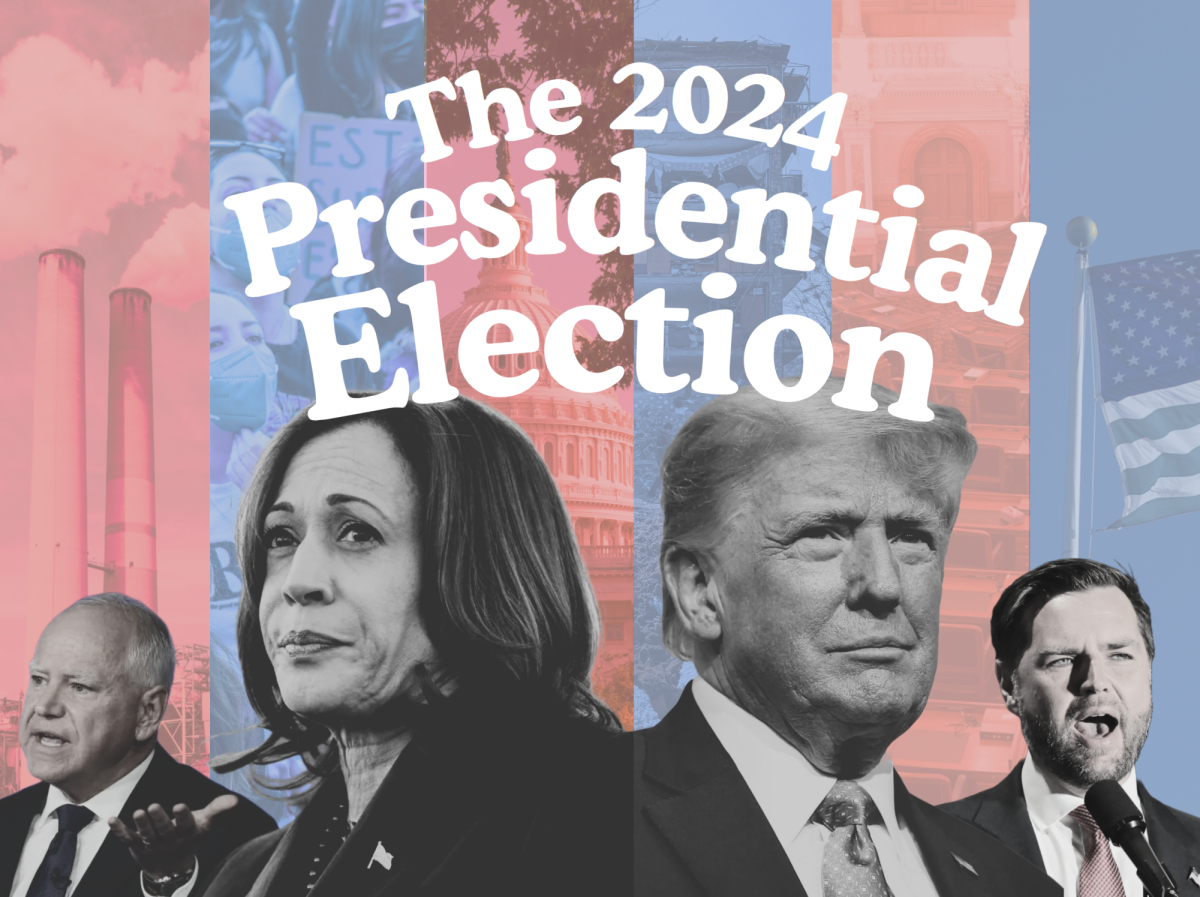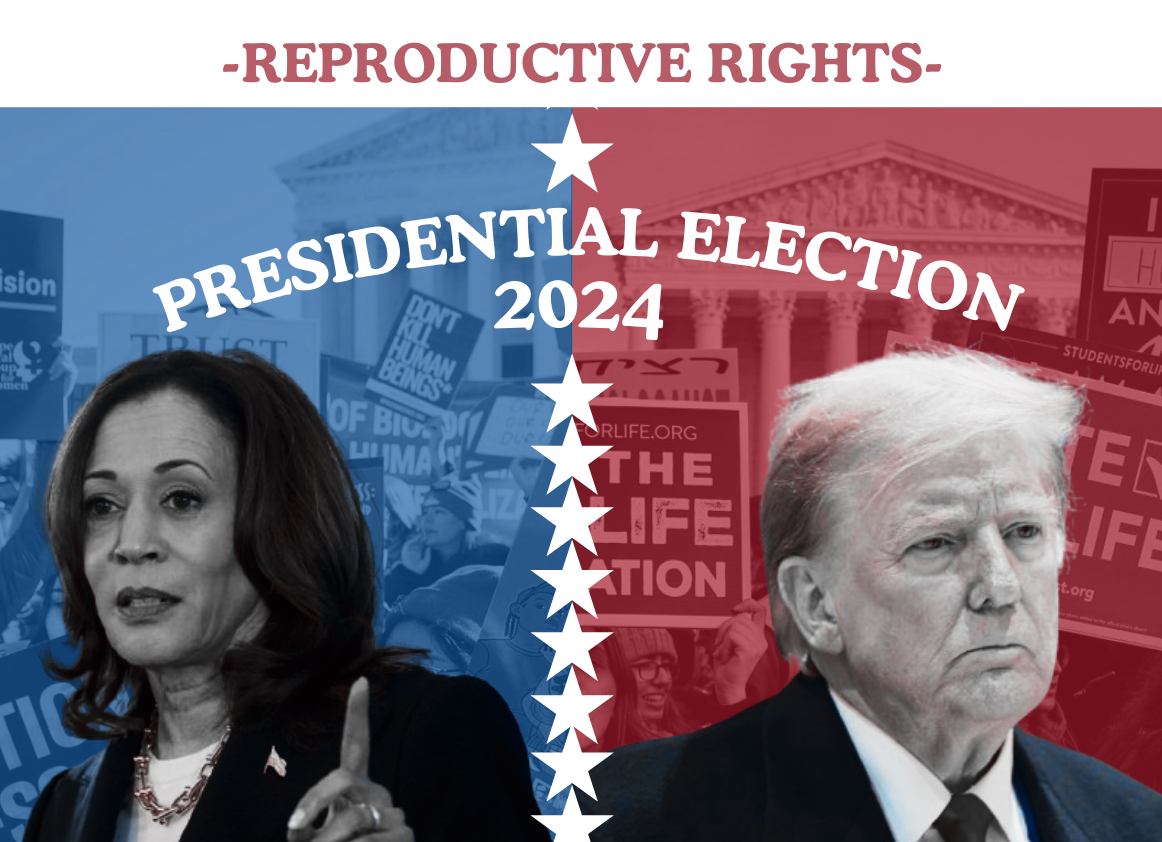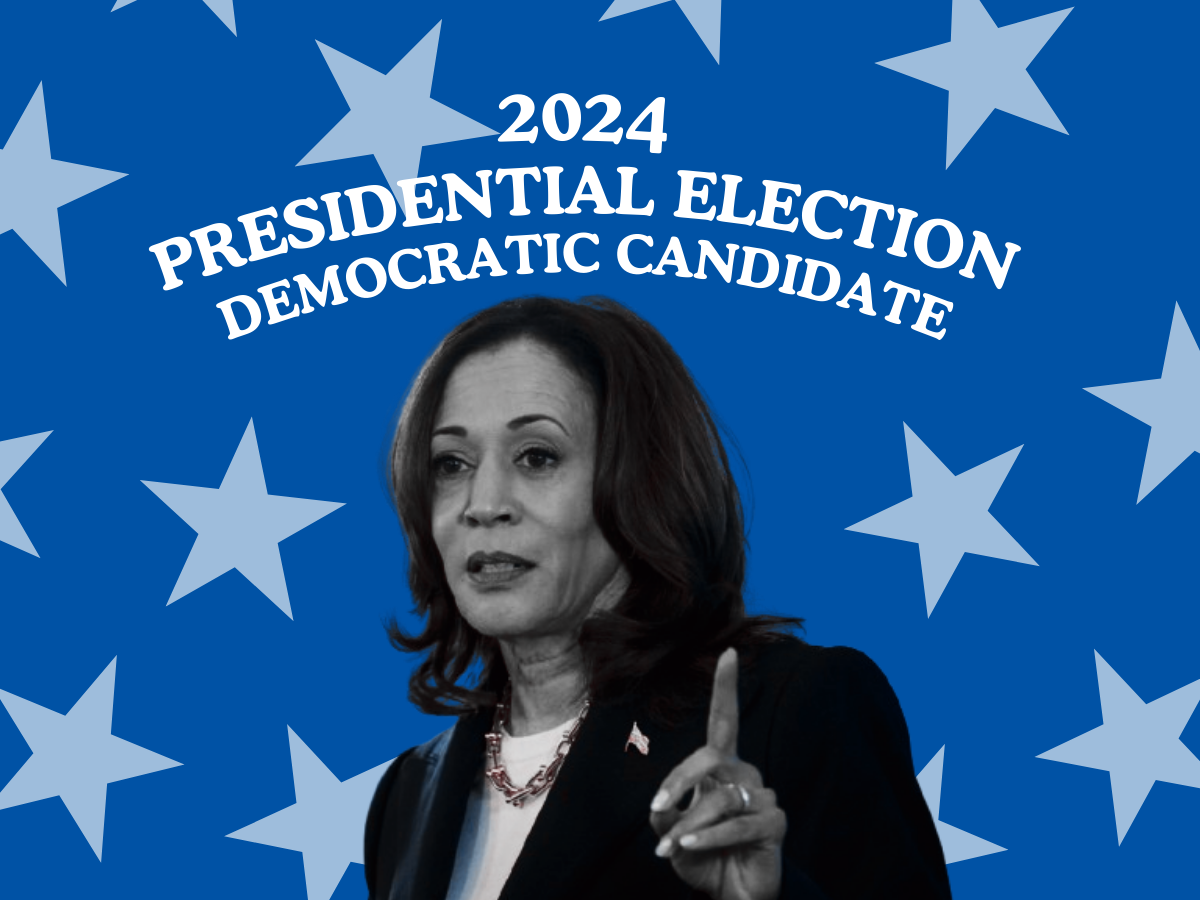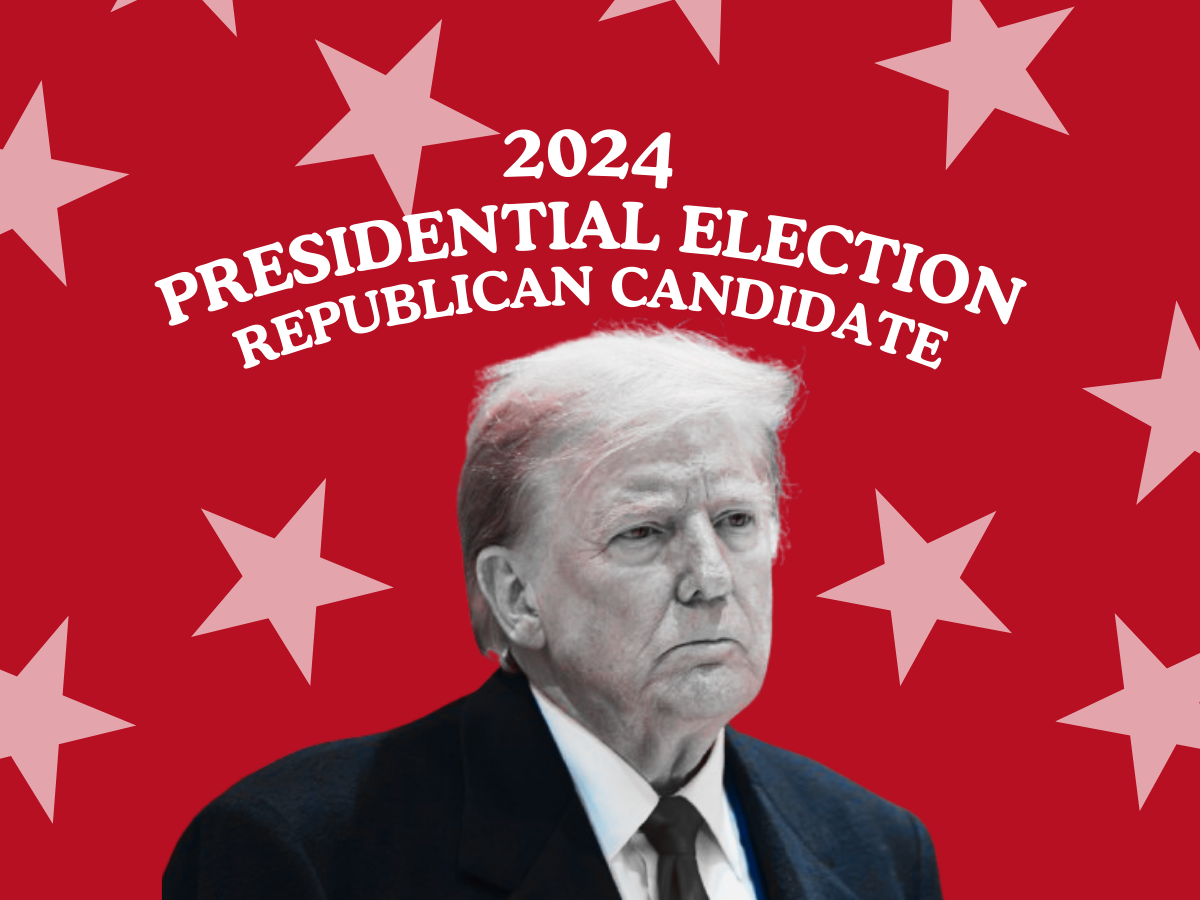This article is a continuation of the 2024 Presidential Election series that delves into all facets of the 2024 Presidential Election, held on Nov. 5, 2024. If you are curious about student opinions at Foothill Technology High School (Foothill Tech), presidential candidates or campaign maps, this series is for you.
In the electoral race to become President of the United States, gathering votes from every state counts; especially in the six current swing states, also known as battleground states. These states include Arizona, Nevada, Wisconsin, Pennsylvania, Michigan and Georgia. A swing state is one that has similarly strong levels of support for Republican and Democratic candidates, making victory for either party a narrow possibility. Voting trends show that candidates who win the battles in swing states tend to then win the election as a whole.
Arizona
Arizona is a Southwestern state bordering Mexico with a population of 7.4 million people and 11 votes in the Electoral College. Being a border state, the effects of the influx of immigration across the country led millions of undocumented immigrants through the Southern border of Mexico into states like Arizona, where issues on border control and immigration are at the forefront.
Despite having a strong history of voting Republican, Arizona swung Democratic in the 2020 election by a narrow margin of 0.4 percent, just over 10,000 votes. The state hadn’t voted Democratic since the 1996 election, where Democratic candidate Bill Clinton won with a 2.2 percent lead.
Arizona has a split demographic of voters: more than half of the state’s population is white (4.3 million citizens), along with a strong population of Hispanic or Latino citizens (2.2 million people). Other demographics are in smaller populations, such as African Americans at around 339,000 citizens and Asians at around 257,000. Arizona contains large demographics for a variety of ages; with a population of more than 1.4 million people between the ages of 20 to 34, and a population of around 1.3 million people between the ages of 50 to 64.
Nevada
Nevada is a Western state facing economic concerns, with a population of 3.1 million people and a total of six electoral votes. Facing a 64 percent unemployment rate after COVID-19, issues of employment, economy, unionization and housing affordability are swirling amidst the battleground state.
With a recent trend of voting Democratic for four consecutive elections since 2008, the 2020 election was no exception, where Democratic candidate, Joe Biden won by a 2.4 percent lead. In the 2016 election, that margin was even smaller for Democratic candidate Hillary Clinton, at 1.6 percent, just over 25,000 votes. Aside from the blue streak in Nevada, nearly one-third of voters in the state identified as unaffiliated to any party, where victory for Republican or Democratic candidates is not guaranteed.
Similarly to Arizona, Nevada has key demographics for white and Hispanic voters, with a statewide white population of around 1.6 million people, and just over 890,000 Hispanic or Latino people. Condensed more in the urban sectors of the state, such as the city of Las Vegas in Clark County, are growing populations of African American and Asian people. With around 304,000 African American and 272,000 Asian citizens across the state, more than 80 percent of these demographics are located in Clark County. Nevada also harbors a large population of people aged 25 to 49, at just over 1 million individuals.
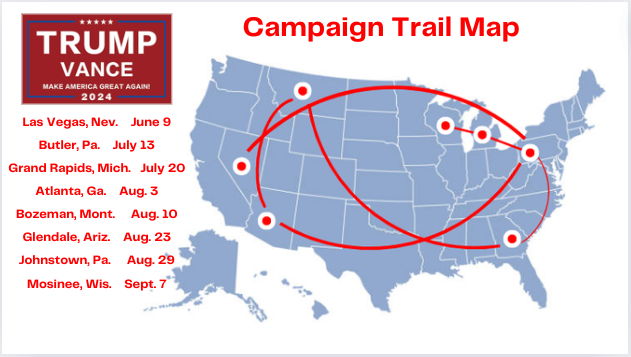
Wisconsin
Wisconsin is a Midwestern state, annexed with Michigan, holding a population of more than 5.8 million people and a count of 10 electoral votes. While the wage gap is slowly closing and employment hits a record high for Wisconsin, unionization is struggling under state policy in a state dependent on the working middle class.
Although the state has been ruled Democratic for a majority of recent decades’ elections, both the 2016 and 2020 elections were decided by less than a 1 percent margin and resulted in bipartisan victories. In 2020, the Democratic candidate Joe Biden edged ahead with a 0.6 percent lead of around 20,000 votes. Before that, in the 2016 election, Republican candidate Donald Trump broke the Democratic voting pattern with a similar narrow margin between the parties; garnering a 0.8 percent lead of just over 20,000 votes.
The backbone of Wisconsin’s demographics is the large population of the white working class, with over 4.7 million white people, more than 80 percent of the state’s total population. The second largest demographic is Hispanic or Latino citizens, totaling around 447,000, followed by African American citizens, at around 376,000, and Asian citizens at around 176,000 people. The largest age demographic for Wisconsin lies in those aged 50 to 64 at 1.2 million people, matched with a similarly strong population aged 20 to 34, at more than 1.1 million people.
Pennsylvania
Pennsylvania is a Northeastern state, one of the most influential swing states in the election, with a population of nearly 13 million and a value of 19 electoral votes. Hydraulic fracturing, known as fracking, is a method of extracting natural gas through a well. Pennsylvania alone carries over 220,000 fracking wells, raising concerns about the plastic industry from fracking byproducts, as well as overall environmental health.
The state had been deemed Democratic in elections since 1992, Republican candidate Donald Trump changed the blue tide in the 2016 election — the same election Michigan and Wisconsin voted Republican — by a narrow 0.7 percent margin of a little less than 50,000 votes. However, in the 2020 election, Pennsylvania was swung blue once again by Democratic candidate Joe Biden, capturing a 2.8 percent lead of more than 81,000 votes.
Pennsylvania has a mainly white population, in both rural and urban regions of the state, with concentrations of other populations in the more urban areas. At 9.75 million people, the white population is easily the largest demographic. The African American population is next, at more than 1.4 million people, then a slightly smaller population of Hispanic or Latino at 1.05 million people. An even smaller population is Asian citizens, at around 510,000 people. Age demographics are split into two large groups; age 15 to 34 at over 3.3 million people, and age 50 to 64 at 2.6 million people.
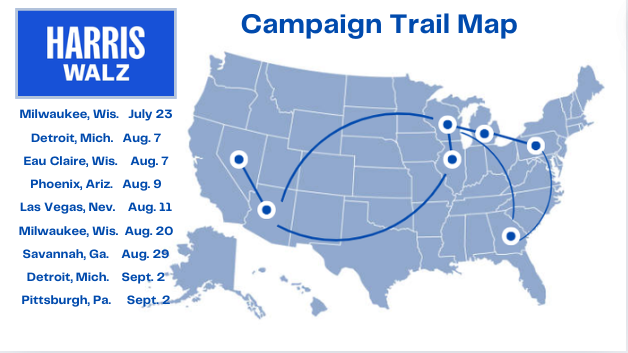
Michigan
Michigan is a Midwestern state, with a population of about 10 million people, and carrying 15 electoral votes: a decline from the previous 21 electoral votes in the 1970s. As the cost of living has increased in recent years, inflation among other economic issues has become an increasingly prominent concern for the state of Michigan.
Mirroring the voting streak of Pennsylvania and Wisconsin, Michigan had voted Democratic since 1992; until the 2016 election, where the state was won by Republican candidate Donald Trump by the slim margin of 0.2 percent, around 11,000 votes. Additionally paralleling Pennsylvania and Wisconsin, the state was turned back to blue in the 2020 election by Democratic candidate Joe Biden with another 2.8 percent lead of more than 154,000 votes.
While Michigan has a sizable African American population of around 1.4 million people, the larger demographic in the state remains in the white population with 7.5 million people, 75 percent of the total population. Other smaller demographic groups include Hispanic or Latino, at around 564,000 people, and the Asian population at 334,000. Michigan holds two large age demographics, 2.02 million people aged 15 to 29 and 2.04 million people aged 50 to 64.
Georgia
Georgia is a Southern state with a population of 10.9 million people and a count of 16 electoral votes. With nearly half its population being minorities, gathering turnout and campaign support from both the African American community and Hispanic or Latino community is crucial to either party’s victory in the state.
The Republican party had won Georgia in every election since 1996, until the 2020 election where Democratic candidate Joe Biden won by 0.3 percent, a little less than 12,000 votes. In the previous 2016 election, the Republican candidate Donald Trump had more than a 5 percent margin, over 200,000 votes.
The demographics of Georgia are almost equal in the majority-minority populations; while the state has a population of 5.5 million white people, there is also a large African American population of over 3.3 million people. Adding to the minority population is the Hispanic or Latino demographic, at around 1.1 million people. Following behind is the Asian population, at about 479,000 people. Georgia holds a broad age demographic with more than 3.7 million people aged 10 to 34.
The battles in swing states are not guaranteed for any party, and the turnout can vary with each election. Targeting key demographics and strong campaigning from both Harris and Walz and Trump and Vance is necessary in gathering support from swing states.




